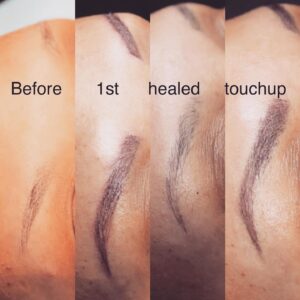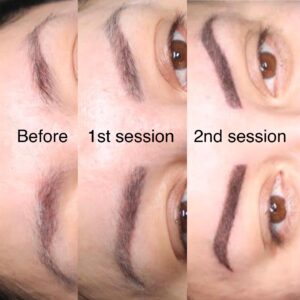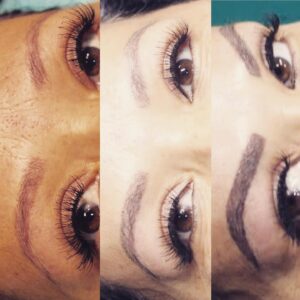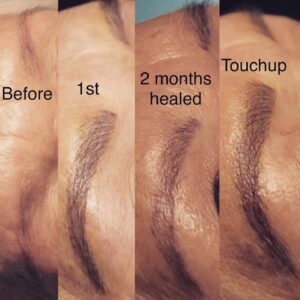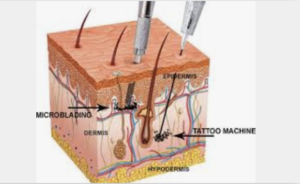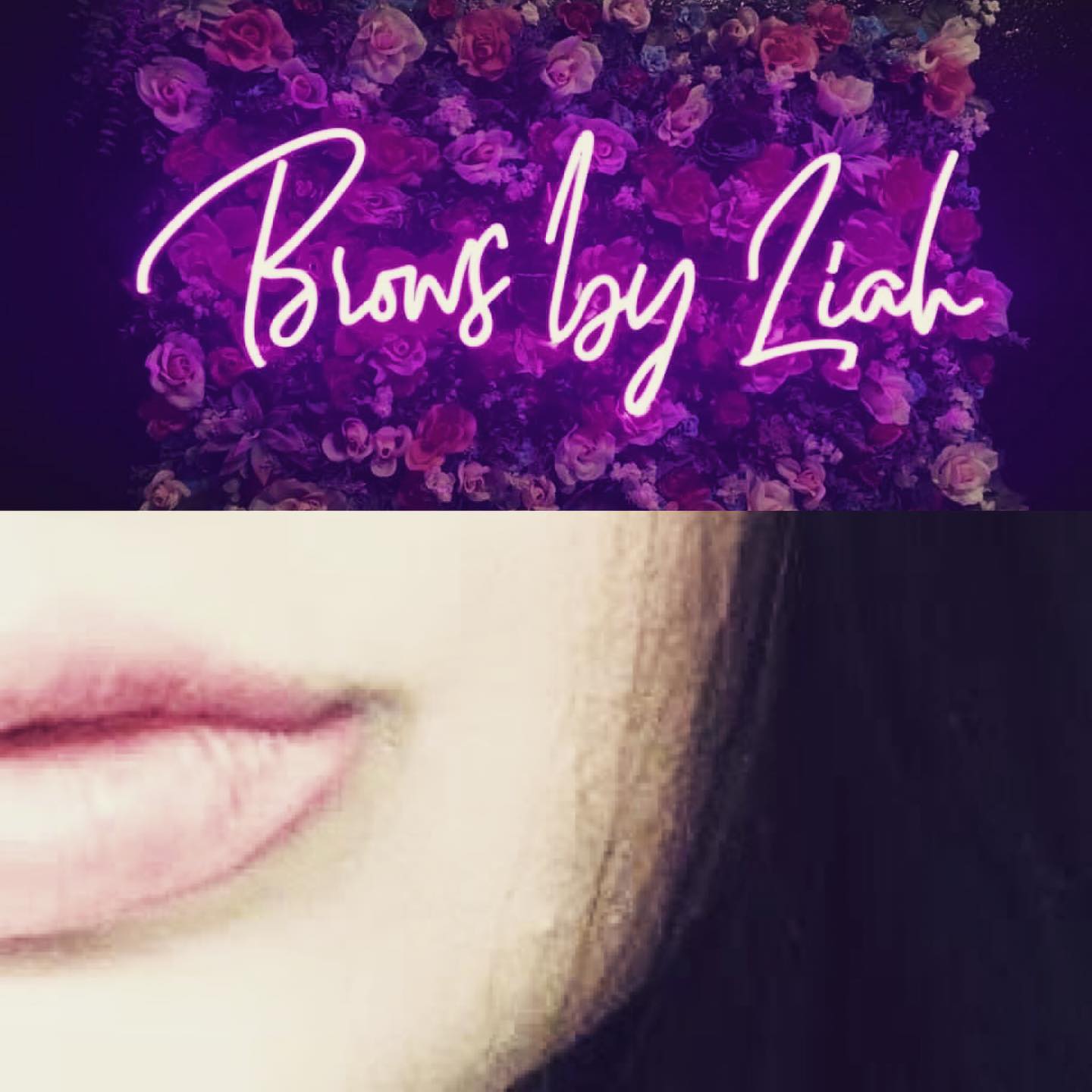
The Healing Process
Anyone considering this procedure should be well informed of the process and reasonable expectations. Your artist should take time in explaining the process and what you should expect over the next 30 days.
The brows always look amazing when they’re fresh but this is only a small part of the process. The real importance is how they will heal. Your artist is only concerned with long term results rather than short term success.
Day 1: You’re in love with your new brows. They look so perfect.
Day 2-4: These brows are way too dark, bold, and the shape looks thicker. I want to rub them, but I know thats not right.
Day 5-7: Your brows will start to scab and dry out.
Day 8-10: My brows are starting to peel off and there’s nothing under them.
Days 11-28: Pigment will set in during this phase
The touchup is to fill in any areas that didn’t heal properly, reshape, and darken areas that are too light. We begin your touchup with a photo and we compare our results. We identify any issues that need to be addressed and we proceed with our appointment. Client’s aftercare contributes to the success of the session. Multiple sessions may be needed to achieve desired results. The brows may look intense and vivid immediately after and days after the procedure. These are built to fade. Many clients ask why. Why do my brows fade? Why can’t you just keep them dark for me? Let’s explore the reasoning behind fading pigments, but first check out some healed results.
Why is microblading only semi-permanent?
Traditional methods of permanent makeup consists of implanting pigment to the dermis. The dermis is live skin made up of blood vessels, sebaceous glands, sweat glands and nerves. Since this layer of skin is alive, it usually retains pigments permanently.
In microblading, pigment is deposited right above the dermis into the basal layer of the epidermis.
Because the cells of the basal layer continuously divide, the pigment is then broken down and eventually migrates to the surface causing the pigment to fade away.
We stay in the Epidermis: 3-4 layers deep but why?
Body tattoos and the old school style permanent makeup enters 7-8 layers of the skin.
Permanent Makeup 7-8 layers deep:
👉Pros: the tattoo is never going away, no need for touchups
👉Cons: with time, we lose our collagen and fatty tissue resulting in our skin becoming thinner. If the skin is blasted with ink/pigment and the skin is thinning, the ink/pigment can start to spread.
This is called Migration or “blow out”
Permanent Makeup 3-4 layers deep:
👉Pros: you won’t have blown out eyebrows when your skin starts to thin!
👉Cons: you do have to maintain your new brows when they start to fade.
Permanent make-up artist
- This term is often thrown around without considering the trend that has happened over the last 20 years
- Permanent make-up artists are now semi-permanent makeup artist. why?
- We are now very aware of pigment migration and “blown out brows”
- New techniques, tools, and standards have changed the depth of our procedures

